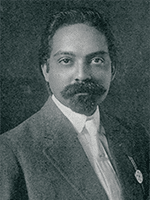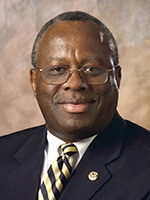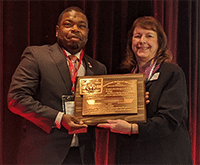By LaKia Brown, DC

Zeal for inclusivity comes from the lack of diversity that has been noticeably prolonged. Being knowledgeable about the lack of representation in the past and present is one way to change the path to the future. Understanding how we got here helps us understand how to make a difference.
Let’s take a historical, but educational, virtual road trip to become aware of how black history helped pave the way for the chiropractic profession:


In March 1923, in Washington, D.C., Central Chiropractic College became a segregated chiropractic school.
In 1927, A.A. Cole and John User founded Interstate Chiropractic Association, the first black chiropractic association.
In 1947, Samantha P. Adams, DC, at the age of 21, became the first African American woman and chiropractor on the Ohio State Medical Board. For 33 years, she was the only African American chiropractor in Toledo, Ohio.
In 1954, Walton Russ, DC, became the first African American to be a licensed chiropractor in the state of Arkansas.
As we progress into the new millennium, African Americans continued to provide significant contributions to the chiropractic profession:

In the July 2019 issue of Chiropractic Economics, I came across an article discussing diversity in the field of chiropractic. The article states that African American chiropractors make up 2.3 percent of the industry’s population in the United States. I immediately reflected upon my time as a chiropractic student. During my matriculation, only two professors were African American, as was the Dean of Students and one recruiter for the college.

Moving Forward: What’s Next?
As this virtual historical road trip comes to an end, I leave you with the following questions to consider in regard to how to bring more diversity into the chiropractic profession moving foward:
- What type of mentorship programs can chiropractors implement to ensure that junior high and high school minority students are aware of our profession as a career choice?
- How can we recruit more minorities into chiropractic colleges and chiropractic organizations?
Dr. LaKia Brown is a graduate of Sherman College of Chiropractic and has been in practice for 10 years. For three years, she has directed the physical medicine department at a multidisciplinary clinic. Dr. Brown currently serves on ACA’s Committee of Equity, Diversity, and Inclusion; Ethics Committee; and Opioid Advisory Board. She is the alternate representative for District I for the Indiana State Chiropractic Association, and a member of the ACA’s Sports Council.
References:
- Abrams, Allen. “Dr. Samantha P. Adams: A Lifetime of Firsts as a Woman and as an African American.” The Truth Toledo, 4 October 2006, accessed February 3, 2021, https://www.thetruthtoledo.com/pdf/2006/100406pdf.pdf
- Bernat, Annette. “Engage 2020 Conference Daily,” ACA News, 31 Jan. 2020, https://www.acatoday.org/News-Publications/ACA-News-Archive/ArtMID/5721/ArticleID/1536
- Carhee Jr., Winston Kyle. “Black History of Chiropractic Timeline,” accessed February 3, 2021, https://www.timetoast.com/timelines/the-black-history-of-chiropractic
- Carhee Jr., Winston Kyle. “The “Black” History of Chiropractic: ABCA History.” Presentation: American Black Chiropractic Association on February 13, 2014, accessed February 5, 2021, https://abcachiro.com/wp-content/uploads/2014/02/ABCA-History-New1.pdf
- “African American History Month 2013,” accessed February 5, 2021, https://blogs.palmer.edu/library/2013/02/28/african-american-history-month-2013/
- Vach, Rick, Black Chiropractors, International Association Cites 92% Whites in Calling for Diversity. Chiropractic Economics, 2019. https://www.chiroeco.com/black-chiropractors/
